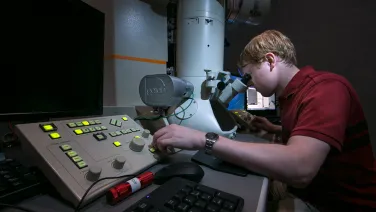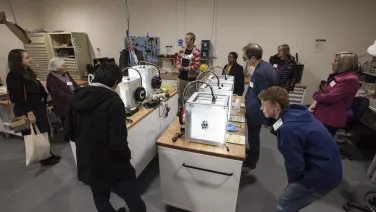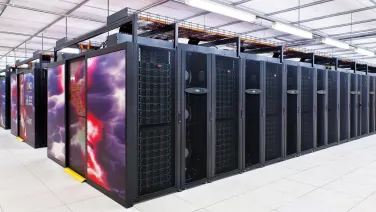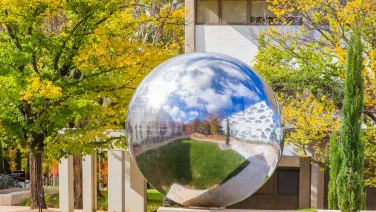
Physics
About
The ANU Research School of Physics constitutes Australia’s largest university-based physics research activity, incorporating major national facilities, national networks, a significant technical manufacturing and prototyping capability, as well as an innovative teaching program.
Our research activity includes nonlinear and quantum optics and quantum systems engineering, soft and hard condensed matter physics, III-V semiconductor physics, nano-engineered and meso-scale materials, nuclear physics, novel imaging technologies and plasma science.
Our researchers have played important roles in some of the most significant breakthroughs in physics, including proving the existence of gravitational waves in 2016.
The observation of a gravitational wave, ripples in space caused by the collision of two black holes, confirms a prediction made by Albert Einstein's General Theory of Relativity 100 years ago, and opens up new fields in physics and astrophysics.
The important role that our researchers played included constructing, installing and commissioning crucial components of the detectors used by the Laser Interferometer Gravitational-wave Observatory (LIGO) in the United States.
Fundamental and applied research, just like this, also sparks the development of novel technologies and have seen a number of successful spin-out companies go global.
In 2009 Lithicon, then named Digitalcore, spun out of the Research School of Physics and Engineering. The big commercial step was taken after 10 years of fundamental research by ANU scientists. Their research combined novel scanning technology and advanced computer algorithms to produce high-resolution 3D images and simulations of fluids in oil reservoir rocks.
Fast forward to February 2014, and Lithicon was acquired for $US8 million by microscopic technology company FEI, cementing a very special research relationship with ANU.













